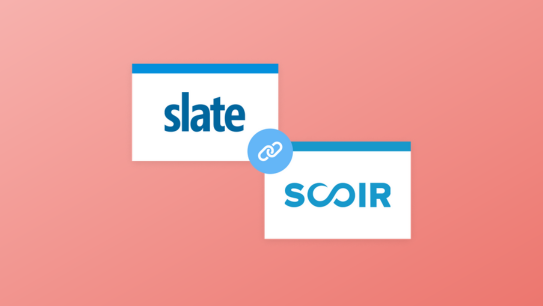3 min read
Stop Guessing. Start Seeing Interest with Scoir + Slate.
We know…we’ve been talking a lot about the Scoir Audience Integration with Slate. If your college uses Slate, this free integration surfaces real...
Scoir is free for your students and for you. We also offer Advanced Solutions to help you better guide your students.
Access resources in the areas of test prep, essay support, and financial aid to better navigate every part of the admissions process.
Access Career Readiness for grades 6-8, built to help you guide students and track progress in the early years of career learnings and activities.
Scoir + Common App are integrating for the 2025-26 academic year!
Check out content and practical guides to help inform your enrollment strategies and programs.

As the college admission process becomes real to you, the discussion about affordability—and the need of financial aid—also comes into sharper focus. Our last post, Inside the Financial Aid Process: A Guide for Students and Parents, provided an overview that should make you feel more comfortable venturing forward. The path you must navigate, though, is fraught with figurative potholes that can throw even the best prepared off course!
|
|
As the college admission process becomes real to you, the discussion about affordability—and the need of financial aid—also comes into sharper focus. Our last post, Inside the Financial Aid Process: A Guide for Students and Parents, provided an overview that should make you feel more comfortable venturing forward. The path you must navigate, though, is fraught with figurative potholes that can throw even the best prepared off course!
In this blog, we’ll take a more nuanced look at some circumstances you are likely to encounter along the way. Nobody likes surprises—especially when it comes to money that you might owe. So, let’s try to anticipate them. A bit of foresight, transparency and interpretation should do the trick!
Yes, colleges are educational institutions, but they have bottom line accountabilities. They might possess extraordinary teaching resources and research facilities but, at the end of the day, they must be able to pay their bills. Many are also intent on doing the necessary to compete for positioning on the mythical pecking order.
As a result, college officials must manage a complex matrix of financial and performance variables. While it is tempting to think that your educational future is of paramount importance to them, you would be wise to remember that it is institutional self-interest that drives their processes.
In the coming weeks and months, you are likely to hear and read statements from colleges that are intended to frame the admission processes on their campuses, statements like “ours is a need-blind admission process,” or “we meet 100% of the demonstrated need of all admitted candidates.”
These statements seem incredibly forward-thinking and altruistic on the surface. As you process them, though, be careful to separate the rhetoric from the reality in order to remain clear-eyed about your own situation.
The concept of financial “need” is used in reference to the difference between Student Aid Index (SAI) and the total cost of attendance at a given college. If your family can afford the total cost, you have no “need” of assistance. Conversely, you are eligible for need-based assistance if your family can’t cover the full cost.
The people making the determination of “need” are the college’s financial aid officers. On the surface, the process would seem straightforward—they look at the results of your financial aid applications. Right, but which ones? When practicing differential need analysis, financial aid officers can basically pick a number—justified by the FAFSA, the College Scholarship Service Profile or, simply, “professional judgment”—that reflects the value attached to your candidacy.
Moreover, preferential packaging will enable them to present you with a financial aid award that is consistent with the degree to which you are valued as a potential student. If you are one of the top candidates at a college, expect generous scholarship and/or grant assistance.
On the other hand, if you are very good but not quite at the top of the class, you might receive a financial aid award that includes more borrowing opportunities for you and your parents (while meeting your need!). Or you might receive a “gapped” financial aid that falls short of meeting your need.
As you can see, the concept of “need” can be highly subjective. While it sounds encouraging that an institution is committed to meeting the difference between your SAI and the total cost of attendance—your need, the statement is only meaningful if there is mutual agreement with regard to that assessment. Don’t be surprised if multiple colleges, all claiming to meet 100% of demonstrated need, offer financial aid in different denominations based on need assessments that reflect your value to each institution.
Implicit in this conversation is the “value” and “return on investment” that is attached to each candidate. At some point in the selection process, admission officers intuitively, if not empirically, arrive at an understanding of a candidate’s likely need of assistance. The greater the need, the greater are the ROI expectations.
The key, then, is to target institutions where your candidacy will be highly valued. When that happens, you have leverage in the determination of “need” as well as the manner in which your need is met. Such schools will admit you and use their resources to encourage your enrollment.
It's important to note the correlation between selectivity and leverage. The harder it is to get into a college, the greater is the competition among extremely talented candidates—and the less leverage you are likely to find when it comes to financial aid.
Conversely, you have lots of leverage at less selective colleges that are more likely to use their financial aid in an attempt to attract your attention.
You are bound to hear from many institutions that say they are “need-blind” in the college admission process—that they will consider students for admission without regard to their family financial circumstances. In other words, they promise to look only at the academic record, not the bank record. Implicit in the statements is a commitment to an inclusive admission process that is unbiased by the ability to pay.
Here’s the “rub.” The statements presume that the practice is absolute—that ability to pay never comes into play—and it applies to all of the university’s applicant’s in all circumstances of the selection process (not most of them most of the time). When there are exceptions, few as they might be, in the admission process, the concept falls short.
Another underlying premise of “need-blind” admission is that the wealth of an institution affords it the ability to proceed in this manner. Accountability (to the IRS) for a fixed financial aid budget, though, limits the potential for any institution to spend financial aid indiscriminately. At some point, difficult decisions must be made.
The bottom line: try not to be distracted by the rhetoric. It’s not a matter of moral imperative. The reality is that each institution will use its financial resources strategically to leverage the enrollments of the students it values most.

A 25-year veteran of the college admission process, Peter Van Buskirk is dedicated to helping families find student-centered solutions in college planning. His ability to interpret and personalize a complex, and often mysterious, college-going process makes him a popular speaker among students, parents and educators. His creative programming has informed, inspired and entertained more than 2,000 audiences around the world. Peter’s books, Winning the College Admission Game; Strategies for Students and Parents and Prepare, Compete, Win! The Ultimate College Planning Workbook for Students, coach families through the complexities of finding and getting into the college that is the best fit for the student. His weekly blogs are featured on his website, www.BestCollegeFit.com, and he has appeared on numerous television and radio interviews including “Oprah and Friends” with Jean Chatzky. A graduate of Bucknell University, Peter moved through the ranks at Franklin & Marshall College to become Dean of Admission, Interim Director of Athletics, Associate Vice President for Enrollment Management, and Executive Officer in the Office of the Provost. He subsequently created and now operates Best College Fit® as a platform for delivering student-centered college planning content to students, parents and educators.

3 min read
We know…we’ve been talking a lot about the Scoir Audience Integration with Slate. If your college uses Slate, this free integration surfaces real...

4 min read
The FAFSA verification process can be overwhelming and daunting to first generation and/or low income (FLI) students, especially because their...

6 min read
The CSS Profile is a standardized financial form that is used by approximately 270 colleges and universities across the United States. Overa 100...